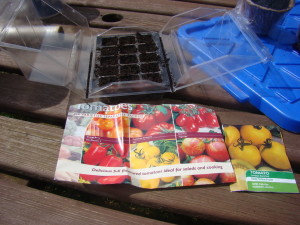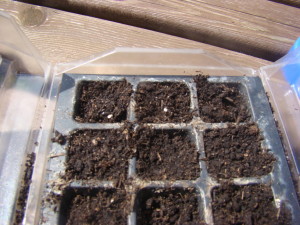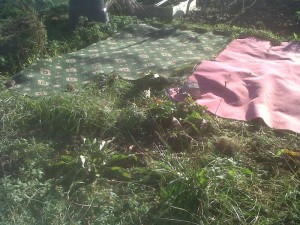Tomatoes are one plant that many people grow from seed and is a plant many beginners start with. Tomatoes are relatively easy to grow, used by most people and are extremely tasty when grown at home.
Your first step is to select the seeds that you want to grow. There are a huge variety of seeds and I personally prefer the heirloom varieties of seed. This are much more natural and tend to produce tastier tomatoes. These can be bought online in the UK and the US from Amazon or from your local garden centre.
 My favourite varieties are yellow tomatoes, which are uncommon and expensive in the shops here in the UK. I do a lot of cooking with tomatoes so tend to grow a lot of them from cherry tomatoes through to plum and beefsteak tomatoes.
My favourite varieties are yellow tomatoes, which are uncommon and expensive in the shops here in the UK. I do a lot of cooking with tomatoes so tend to grow a lot of them from cherry tomatoes through to plum and beefsteak tomatoes.
When you are planting seeds you first need to prepare a seed tray with a good quality potting compost (store bought or your own) and make sure there is about a centimetre gap between the top of seed tray and the top of the soil.
Place a single seed in each square or space the seeds about 2 inches apart. Just gently push them into the soil, not far down, just enough to stop them from blowing away. This allows you to see where all your seeds are placed and to make sure they are well spaced and you haven’t forgotten any.
Now gently sprinkle a small amount of compost, about half a centimetre, on top of each seed and gently press the soil down. You do not need to be too vigorous here, just enough to keep the soil in place. A looser soil will help the seed to push through and get to the surface and you will be repotting these soon enough.
 Then water the seeds in and cover them. Either use cling film (plastic wrap) and wrap it over the seed tray or use a plastic propagator lid.
Then water the seeds in and cover them. Either use cling film (plastic wrap) and wrap it over the seed tray or use a plastic propagator lid.
If you are using cling film then you need to make sure you check your seeds daily as this can keep too much moisture in the seed tray and cause mould to grow.
Then place the seed tray somewhere warm and bright and in a week or so you should find some seeds pushing up through the soil. Check the soil daily and if it is too dry then water it but careful not to over water it. If the watering reveals the seed then just gently push it back under the compost or scatter more on it – this can happen and you do not need to panic.
As the seedlings grow to a size where they have 2 or 3 leaves then you will need to remove them from the seed tray and put them in to individual pots so that they can grow. You do want to put them in to individual pots before they grow too large so that you do not damage the roots which can stunt the growth of the plant.
Read more in the next entry on re-potting and growing tomato plants (coming soon).
























